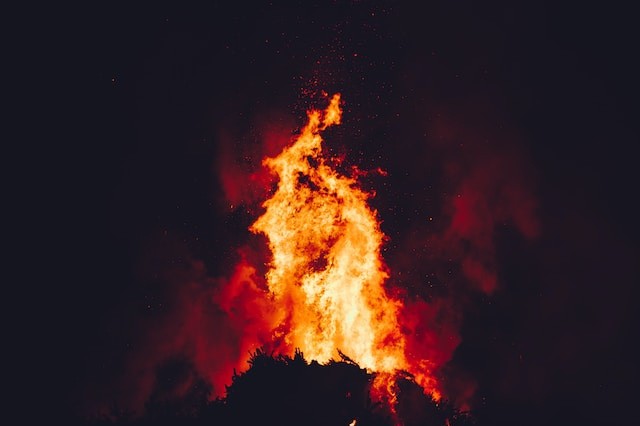Climate change and human activities are altering fire regimes, or the patterns and characteristics of fire in different regions, making them more frequent, severe, large, and unpredictable.
These changes pose challenges for biodiversity conservation, as many species may not be able to cope with the new fire conditions.
It's also possible that some species could evolve quickly in reaction to fire, creating adaptations that enable them to live and prosper in areas where there are frequent fires.
Understanding the different ways that animals are evolving in response to fire could help conservation efforts by identifying the most vulnerable species, the most resilient ones, and the best strategies to manage fire regimes and habitats.
Fire drives animal evolution?

Fire can drive animal evolution in multiple ways, depending on how it affects the survival, reproduction, and dispersal of individuals and populations, as per Phys.org.
It can exert direct selective pressure on animals by exposing them to heat, smoke, flames, and predators during and after fire events.
Animals that have traits that help them avoid, escape, or tolerate fire may have higher fitness than those that do not.
Fire can also indirectly influence animal evolution by altering the availability and quality of resources, such as food, water, shelter, and mates.
It can create new habitats or niches for animals that can exploit post-fire conditions, such as increased light, nutrients, or plant diversity.
Animals that have traits that allow them to use these resources efficiently may have higher fitness than those that do not.
Modifying the patterns of gene flow and genetic drift among populations is another probable effect frequent fures could bring. It can act as a barrier or a facilitator of dispersal for animals, depending on their mobility and habitat preferences.
Fire can isolate populations by destroying or fragmenting their habitats, reducing their effective population size and increasing their genetic drift.
It can also connect populations by creating corridors or patches of suitable habitat, increasing their gene flow and genetic diversity.
Using animal evolution informs conservation?
Animal evolution in response to fire can have positive or negative implications for conservation, depending on the context and the goals, as per EurekAlert.
On one hand, animal evolution can enhance the resilience and adaptability of species to changing fire regimes, reducing their extinction risk and maintaining their ecological functions.
Therefore, conservation efforts should consider the evolutionary potential and history of animals when planning and implementing fire management strategies.
This could involve identifying the key traits and genes that confer fire adaptation or sensitivity in animals, assessing the genetic diversity and structure of populations in relation to fire regimes, monitoring the phenotypic and genetic responses of animals to fire events or treatments, and evaluating the trade-offs and synergies between evolutionary processes and conservation outcomes.
Some examples of possible actions based on evolutionary principles are protecting or restoring habitats that harbor high genetic diversity or unique adaptations in animals; promoting or mimicking natural fire regimes that maintain evolutionary processes and adaptive variation in animals; avoiding or mitigating unnatural fire regimes that disrupt evolutionary processes or cause maladaptive variation in animals; facilitating or assisting adaptive evolution in animals through translocation, reintroduction, captive breeding, or gene editing; and embracing or managing novel evolution in animals through hybridization, invasion, or speciation.
By integrating evolutionary perspectives into conservation practice, we can better understand the ways animals are evolving in response to fire and use this knowledge to improve their chances of survival in the Pyrocene.
© 2025 NatureWorldNews.com All rights reserved. Do not reproduce without permission.





